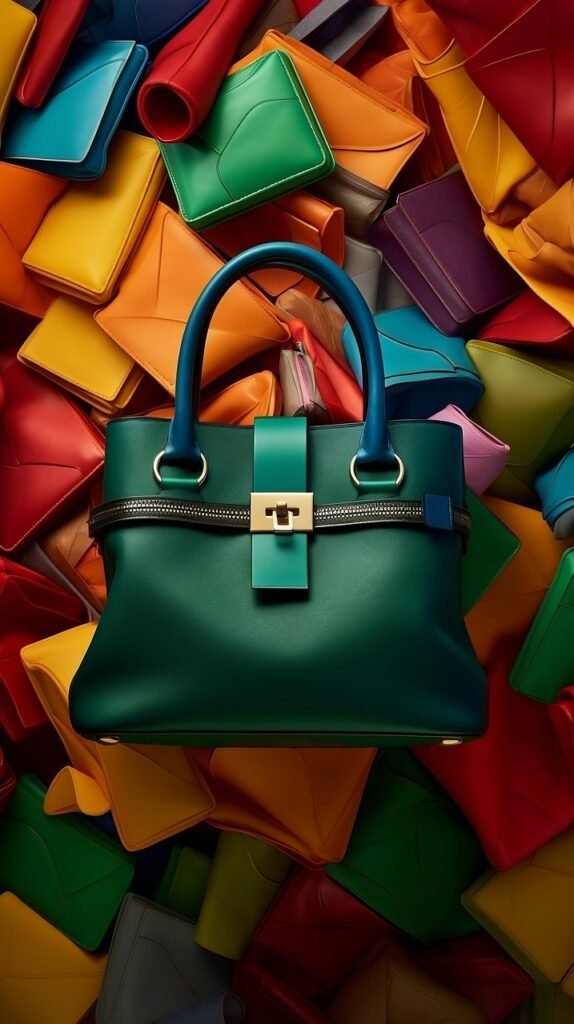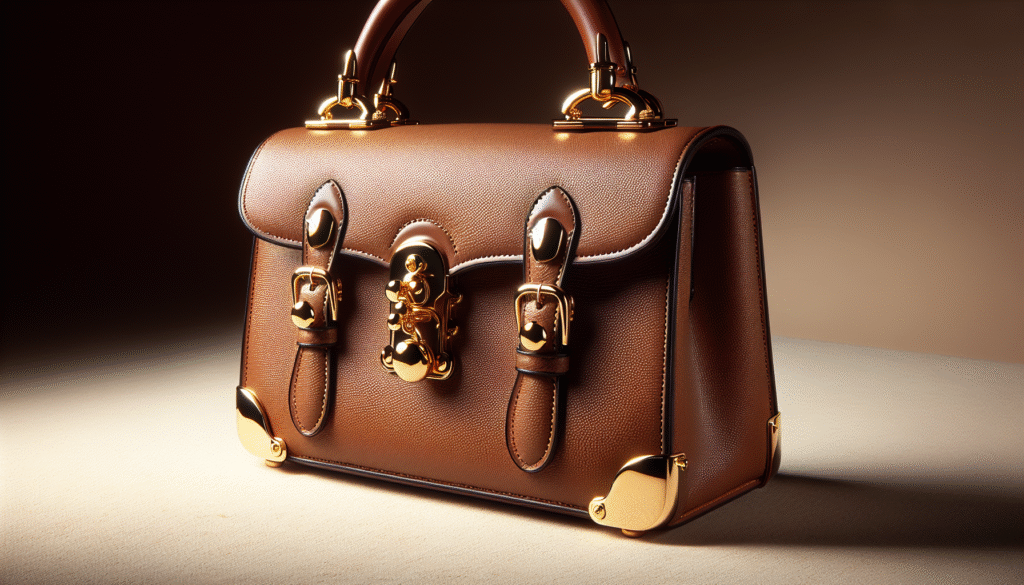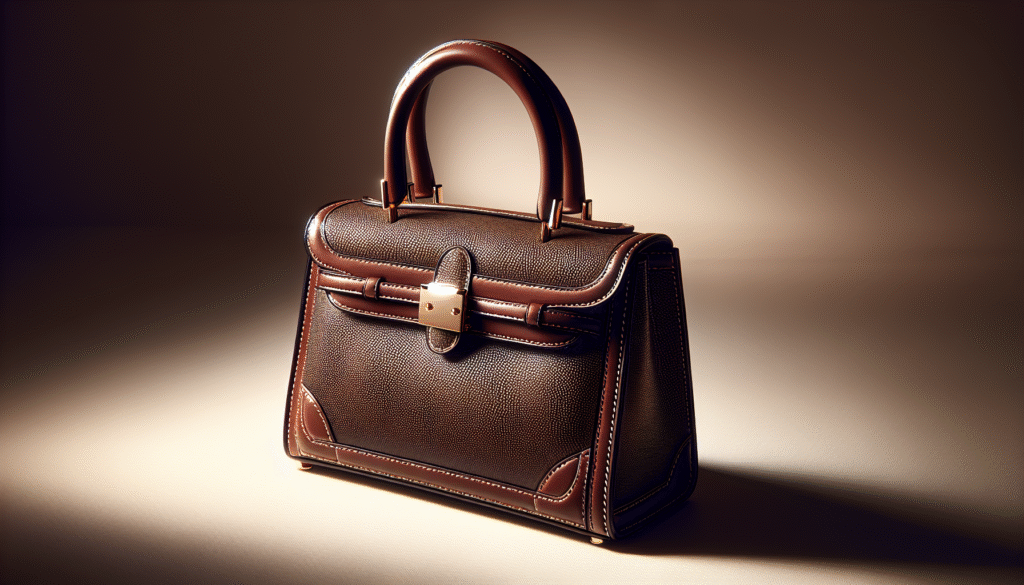Have you ever wondered how to keep your designer handbags looking pristine, how to tell a genuine piece from a fake, or how to style a statement bag so it elevates every outfit?
Designer Handbags Guide to Care, Authentication, and Styling
This guide walks you through caring for, authenticating, and styling designer handbags in clear, practical steps. You’ll get detailed cleaning methods for different materials, red flags for fakes, packing and storage tips, repair options, styling advice, and links to helpful videos and resources so you can protect your investment and enjoy your collection with confidence.
Why caring for your designer handbags matters
You spent money, time, and emotion on your bag, so it makes sense to protect that investment. Proper care preserves appearance, prevents damage, and maintains resale value if you decide to sell or consign. You’ll also get more use and enjoyment from pieces that look and function well.
How authentication affects value and peace of mind
Knowing how to authenticate designer handbags helps you avoid counterfeit purchases and makes it easier to buy pre-owned pieces confidently. Authentication affects warranty, repair eligibility, and resale price. Learning basic authentication cues empowers you to ask the right questions and spot suspicious listings.

Quick overview: what you’ll learn
This guide breaks things down into care routines, material-specific tips, authentication checks, repair options, styling ideas, buying and selling advice, and recommended resources. Each section gives actionable steps so you can put them into practice immediately for your designer handbags.
Basics of daily care and handling of designer handbags
A few simple daily habits will significantly extend your designer handbags life. You’ll want to limit exposure to moisture and rough surfaces, use handles and straps properly, and avoid overloading the bag to prevent distortion and hardware stress.
- Use a wrist or shoulder strap for short errands to avoid constant hand contact with the bag’s surface.
- Keep cosmetics, liquids, and pens in pouches to prevent spills and stains.
- Rotate bags regularly so wear spreads evenly across your collection.

Storage fundamentals
Proper storage prevents shape loss, fading, and mold.
- Store bags upright in a cool, dry place away from direct sunlight.
- Use breathable dust bags—never plastic—so moisture can escape.
- Fill bags with acid-free tissue paper or fabric to maintain shape. Avoid newspaper that may transfer ink.
- Keep straps tucked inside or fastened to prevent creasing.
Authentication — how to tell if designer handbags are real
Understanding authentication is part detective work and part knowledge of brand-specific details. Learn to examine materials, construction, hardware, labels, and provenance.
Examine the materials and craftsmanship of designer handbags
Authentic designer bags u ise high-quality materials and precise construction. Check for consistent stitching, smooth edges, and premium leather feel.
- Stitching: Count stitches per inch for known models; irregular spacing can be a red flag.
- Seams and edges: Raw, fraying edges or glue residue suggest poor manufacturing.
- Lining: Brands choose specific linings and patterns; mismatched linings may indicate a fake.
Hardware, zippers, and engravings
Hardware should feel solid and match brand finishes in designer handbags.
- Zippers: Branded zippers (e.g., YKK, Lampo, Riri) or brand-specific zipper pulls should operate smoothly.
- Engravings: Logos and serial numbers are engraved cleanly on metal parts. Look for crisp fonts and alignment.
- Weight: Cheap bags often use lightweight, hollow hardware. Authentic hardware has a satisfying weight.
Labels, serial numbers, and authenticity cards
Different brands use different methods for tracking designer handbags pieces. Learn the typical locations and formats for labels and serials.
- Serial numbers: Check the format, placement, and font. Many brands encode model and production details.
- Authenticity cards: These can be forged, so treat them as supporting evidence, not definitive proof.
- Datestamps: Some brands include date codes inside pockets or on leather tabs. Confirm the code matches the brand’s system.
Packaging and provenance
Original packaging, dust bags, authenticity booklets, and receipts add credibility. Provenance—like purchase receipts or service records—greatly improves trustworthiness.
- Dust bags: The feel, fabric, and logo placement matter. Cheap print or flimsy fabric may be a sign of counterfeit.
- Boxes and ribbons: These should be high quality and consistent with brand standards.
- Receipts: Verify store details and purchase dates when possible.
When to use professional authentication
If a designer handbag is high-value or you’re unsure after visual checks, consider professional authentication services, especially before buying expensive pre-owned items. Some services provide certificates and detailed reports.

Cleaning and material-specific care
Different materials require different cleaning methods. Using the wrong product can cause irreversible damage, so match the care to the material.
Smooth/grain leather designer handbags
Smooth leather is common and fairly resilient, but it needs regular upkeep.
- Daily care: Wipe with a soft, dry microfiber cloth to remove surface dust.
- Cleaning: Use a pH-balanced leather cleaner. Apply with a soft cloth in circular motions, then wipe away residue.
- Conditioning: Apply a high-quality leather conditioner sparingly to keep leather supple and prevent cracking.
- Avoid: Harsh chemicals, baby wipes, and prolonged exposure to direct sunlight.
Suede and nubuck
Suede and nubuck are delicate with a nap that shows wear on designer handbags.
- Brushing: Use a suede brush to lift and restore the nap.
- Stains: Use a suede eraser for small marks; for oil stains, consult a professional.
- Water: Apply a protective water-repellent spray made for suede, but test on an inconspicuous area first.
- Storage: Avoid crushing the nap—stuff the bag to keep its shape.
Canvas and coated canvas
Canvas designer handbags are durable but can stain and develop odor.
- Spot-clean: Use a mild soap solution and soft cloth. Rinse and air dry.
- Coated canvas: Resist moisture, but avoid abrasive scrubbing to preserve printed logos.
- Stain removal: For persistent stains, use a gentle upholstery cleaner on a small area first.
Patent leather and metallic finishes
Patent leather is glossy and can show scuffs and discoloration on designer handbags.
- Cleaning: Wipe with a damp microfiber cloth. For scuffs, use a small amount of mineral oil or petroleum jelly, applied gently.
- Discoloration: Keep away from heat and chemicals that can alter finish.
- Metallics: Be extra careful; avoid rubbing which can remove finish.
Exotic skins (python, crocodile, ostrich)
Exotic skins require specialized care and often have legal and regulatory considerations.
- Moisture: Keep conditions stable—avoid prolonged humidity or dryness.
- Cleaning: Use a professional with experience in exotic skins for deep cleaning or repairs.
- Protection: Store flat or filled to maintain scale alignment and prevent curling.
Stain removal and quick response tips
Act fast and use appropriate methods for different stains, on designer handbags.
- Ink: Blot with isopropyl alcohol on a cotton swab; test in an inconspicuous spot. For luxury leather, seek professional help.
- Oil/grease: Sprinkle cornstarch or talcum powder to absorb oil overnight, then brush off gently.
- Water rings: Gently buff with a soft cloth; if persistent, apply a leather conditioner.
- Mold/mildew: Use a 50/50 solution of water and rubbing alcohol on a cloth, wipe gently, and dry thoroughly. For severe infestations, see a professional.

Repair, restoration, and cost expectations
Knowing repair options and typical price ranges helps you decide whether to restore or replace a bag.
Common repairs
- Zipper replacement or repair
- Strap reattachment or replacement
- Handle reinforcement or rewrapping
- Lining repair or replacement
- Color restoration and refinishing
DIY vs professional repair
Minor issues like thread pulls or small scuff touch-ups can be DIY if you’re confident. Structural repairs, leather re-dyeing, or exotic skin work should go to professionals.
Typical repair cost table
| Repair type | Typical cost range (USD) | Notes |
|---|---|---|
| Zipper replacement | $50–$250 | Depends on zipper brand and labor |
| Strap/handle repair | $40–$300 | Rewrapping may cost less than full replacement |
| Lining repair/replacement | $80–$500+ | Full lining replacement is pricier |
| Hardware replacement | $40–$200 per piece | Depends on plating and sourcing parts |
| Color restoration/refinishing | $75–$350+ | Complex colors or exotic skins cost more |
Costs vary by region, brand, and extent of repair. Always get estimates from reputable repairers.
Choosing a repair service
- Use authorized brand repair centers for brand warranties and authenticity maintenance.
- Seek specialist leather repairers or cobblers with luxury experience.
- Ask for before-and-after photos and references.
Insurance, valuation, and resale preparation
Protect high-value pieces with insurance and keep documentation for resale of designer handbags.
- Appraisals: Obtain a professional appraisal for insurance or estate purposes.
- Homeowners/renters insurance: You may add valuable bags as scheduled items for full coverage.
- Consignment prep: Clean, photograph, and gather original packaging, receipts, and certificates to maximize resale price.

Buying and selling designer handbags — smart strategies
Whether buying new or pre-owned, you’ll get better deals and safer transactions with the right approach.
Buying new from boutiques
- Verify authorized retailers and official brand stores.
- Check return and warranty terms.
- Ask about care instructions and included accessories.
Buying pre-owned — what to check
- Photos: Request high-resolution pictures of logos, serials, interior tags, hardware, and corners.
- Questions: Ask about repair history, wear, storage, and reason for sale.
- Authentication: Use authenticated marketplaces or independent services before purchase.
- Return policy: Buy from sellers with fair return windows and buyer protection.
Selling or consigning your designer handbags
- Clean and repair: Invest in minor repairs to increase resale value.
- Documentation: Provide receipts, authenticity cards, and service records.
- Pricing: Research similar listings to set realistic prices. Consignment will charge a commission but reach buyers who want authenticated, curated items.
Styling: how to wear designer handbags with confidence
A bag can change your outfit’s tone from casual to polished. Learn strategies to combine proportions, colors, and textures.
Match bag size to occasion
- Daytime errands: Choose crossbody or tote for hands-free practicality.
- Work: Structured medium-sized bags create a professional look and fit essentials.
- Evening: Opt for a clutch or small shoulder bag to complement dressy attire.
Coordinate colors and finishes
- Neutral bags: Black, tan, and beige are versatile and timeless.
- Statement colors: Use bright or patterned bags as a focal point against neutral outfits.
- Metallics and patent: Pair them with simple textures so the bag stands out.
Balance statement and simplicity
If the bag has bold hardware, prints, or logos, keep jewelry and clothing minimal so the bag remains the centerpiece. Conversely, pair a minimalist bag with a patterned or textured outfit for harmony.
Seasonal styling tips
- Spring/Summer: Lighter leathers, canvases, and pastel shades work well.
- Fall/Winter: Rich leathers, deep tones, and structured silhouettes fit the season.
Outfit pairings table
| Occasion | Recommended bag styles | Styling tips |
|---|---|---|
| Errands | Crossbody, small backpack, tote | Keep hands free; choose durable materials |
| Work | Structured tote, satchel, brief-style bag | Pick neutral colors; consider laptop fit |
| Casual brunch | Hobo, sling, mini tote | Mixed textures and playful colors |
| Evening | Clutch, minaudière, mini shoulder | Minimal accessories; focus on silhouette |
| Travel | Weekender, convertible backpack | Easy packing; secure compartments |
Caring while traveling
Travel is a key time for wear and damage. Use protective measures and smart packing.
- Carry-on vs checked: Keep valuable bags in carry-on to avoid theft and damage.
- Protective covers: Use dust bags or soft covers when storing bags in luggage.
- Weatherproofing: Carry a compact umbrella or rain cover to protect leather and hardware.
- Passport and documents: Use interior zip pockets for valuables to reduce theft risk.
Special considerations for limited editions and collectible bags
Limited editions require extra care to preserve rarity and value.
- Documentation: Keep certificates, receipts, and any limited-edition numbers.
- Storage: Climate-controlled storage is ideal for long-term preservation.
- Usage: Rotate them sparingly to limit wear while still enjoying ownership.
Video, image, and resource recommendations
You can reinforce learning with visual demonstrations and brand care guides. Below are reputable channels and resources to watch and read.
- YouTube: Search channels like “The Chic Fashionista,” “Haute Handbags,” and official brand channels for tutorials on cleaning and styling. Look for videos titled “How to Clean Leather Bags” or “How to Authenticate [Brand Name] Bag.”
- Brand care pages: Chanel, Hermès, Louis Vuitton, and Gucci have official care pages detailing manufacturer-approved cleaning and storage.
- Authentication services: Companies such as Entrupy, Authenticate First, and reputable consignment stores provide authentication services or guidance.
- Repair networks: Leather repair specialists and authorized brand repair centers often post before-and-after galleries that help you set expectations.
Frequently asked questions
This section addresses common concerns so you can act quickly and confidently.
Can all stains be removed at home?
Not all stains respond well to home remedies. Oil, ink, or dye transfer may require professional care to avoid worsening the damage. When in doubt, consult an expert.
Will conditioning darken my leather?
Some conditioners can slightly darken leather. Always test on an inconspicuous area and use conditioners recommended for your leather type.
How often should I have my designer handbags professionally serviced?
Consider professional cleaning or inspection annually for frequently used bags and every few years for items in rotation, or sooner if damage occurs.
Is authentication guaranteed by services?
No authentication is infallible, but reputable services reduce risk. Use multiple verification points—images, serial checks, provenance, and professional opinions.
Quick-check authentication checklist
Use this checklist before buying or selling designer handbags:
- High-resolution photos of all angles
- Visible serial numbers and location verification
- Clear images of hardware engravings and zippers
- Documentation: receipt, dust bag, box, authenticity card
- Comparison to known genuine models
- Consider third-party authentication for expensive pieces
Final tips to maximize longevity and enjoyment
- Rotate bags to distribute wear.
- Maintain a small care kit: microfiber cloth, suede brush, mild cleaner, and tissue paper.
- Treat stains quickly and store in breathable dust bags.
- Educate yourself on brand specifics—small details matter.
- Enjoy your collection—confidence in care and authentication lets you use your bags without constant worry.
Resources and continued learning are essential to becoming fluent in designer handbags care and authentication. By applying these practices, you’ll keep your designer handbags looking great, preserve their value, and wear them with confidence. If you want, you can tell me which brands or specific bags you own and I’ll give tailored care and styling advice for each one.


